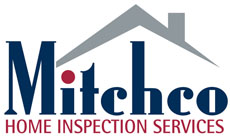Understanding Radon
Did you know that high levels of radon, a naturally occurring gas that we breathe every day, is the 2nd  leading cause of lung cancer?
leading cause of lung cancer?
Did you know that it is easy to find out if the radon rate in your home is dangerous?
Did you know that it is easy to fix elevated radon levels in your home?
For years, real estate agents have been recommending testing radon levels before buyers purchase a new home. The good news is that radon is easy to test and fix.
Dr. Oz has a video that does a great job of explaining what radon is, how it gets into your home, and how it can cause lung cancer. Watch the video and then give us a call if you want Mitchco Home Inspection Services to inspect for radon.
http://www.doctoroz.com/videos/1-cancer-risk-home-pt-1
Compared to other problems you might discover in your home, the cost is fairly reasonable if you do find a problem and need to have a radon mitigation system installed.
For under $200, you can have your home professionally tested to know if you have a problem that needs to be addressed. If you do have elevated levels of radon in your home, you can have it mitigated, eliminating dangerous radon gas levels, for around $700 – $900.
There are also DIY test kits available for a lot less money. We wouldn’t use these during a real estate transaction, as there would be no way of knowing if the home seller carried it outside during the test to reduce the radon level for the results. But, it is a good inexpensive solution to testing your home for yourself.
The state of Missouri offers free “do-it-yourself” radon test kits. The contact number is: 866 628-9891. Missouri offers radon testing kits one time per household. The kits are free of charge and even have a free return mailer. The kits are fairly simple to use.
However, the state testing kits are not always in stock and you should allow a month for your results, (3 plus weeks shipping time -3 days to test). The results are not as accurate as digital readings. Also, the test results are usually not acceptable for mortgage loans and real estate transactions because they are not “credible.”
We offer this information because we are truly concerned about the need for radon awareness and radon testing. Statistics show that in our area about 1 in 5 homes have levels high enough to cause cancer.
Any home may have a radon problem from such sources as:
- Cracks in solid floors
- Construction joints
- Cracks in walls
- Gaps in suspended floors
- Gaps around service pipes
- Spaces inside walls
- The water supply
“Testing in Missouri has shown that 18 percent of all homes have radon levels above the level considered dangerous (4.0 picocuries per liter of air),” said Bob Schultheis, natural resources engineering specialist, University of Missouri Outreach and Extension. “Energy-efficient or poorly ventilated homes are more likely to have higher radon levels,” according to Schultheis.
What are the Radon Levels in the St. Louis area?
Missouri is identified by the EPA as having moderate risk. This means that there is good chance that any given home will have radon levels in their home that is higher than 4.0 pCi/L, the level established by the EPA as putting your health at risk.
| St. Louis Home Radon Levels | |||
| Average Radon Level (pCi/L) |
% of Homes above 4.0 pCi/L |
% of Homes above 2.0 pCi/L |
|
| Missouri Counties: | |||
| St. Louis City | 2.5 | 17.8% | 48.2% |
| St. Louis County | 4.0 | 28.8% | 56.6% |
| St. Charles County | 4.0 | 27.5% | 54.5% |
| Jefferson County | 5.3 | 37.0% | 67.3% |
| Franklin County | 3.4 | 32.8% | 60.2% |
| Warren County | 4.1 | 35.1% | 61.4% |
| Lincoln County | 4.0 | 33.0% | 60.8% |
What does this mean?
If you live in St. Louis County, almost 1 in 3 homes has radon levels that are above the level the E.P.A. defines as safe.
Your risk of living in a home with high radon levels is lowest in St. Louis City, and highest in Jefferson County, MO.
Does this mean that St. Louis City homeowners don’t need to test their homes?
Absolutely not.
While your chances of having a home with a radon issue is lower, if you happen to live in the 1 in 5 home that DOES have a dangerous radon level, you are putting yourself and your family at risk for lung cancer even if you do not smoke. If you are a smoker or former smoker, your risk for getting lung cancer is even higher.
People who live in rental homes or ground level condos should also have their homes tested.

